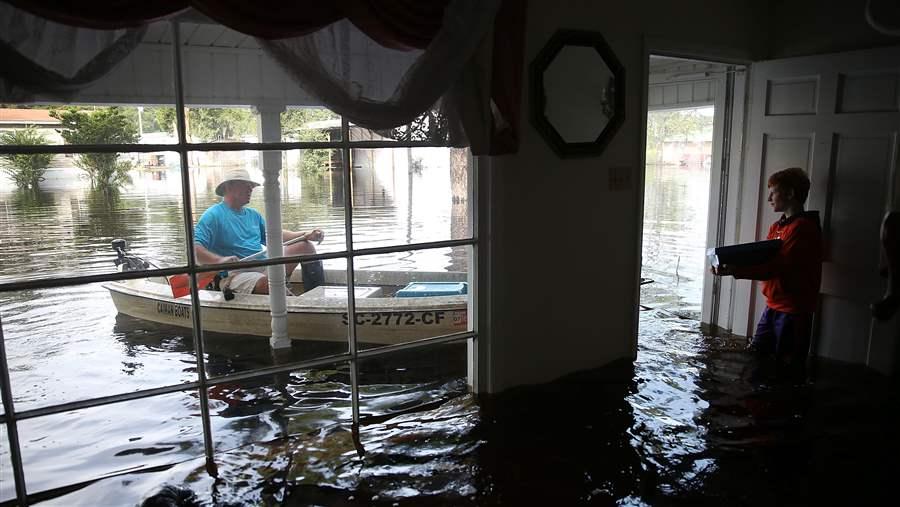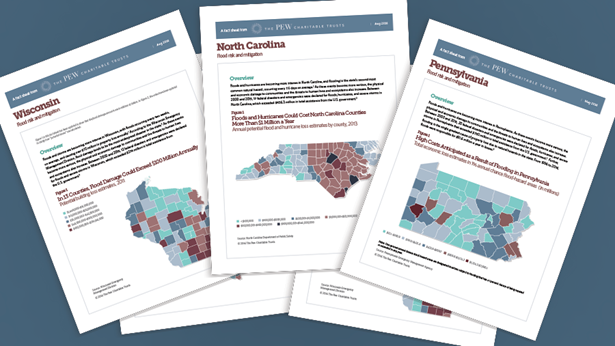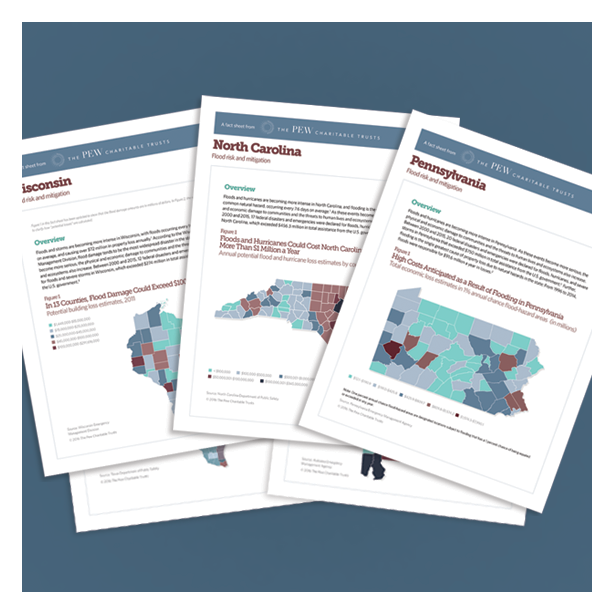Poll: Nearly 75% of Voters Back Flood Reforms

Allen Poston, left, and nephew Braxton Blakley in Andrews, South Carolina, after heavy rain in October 2015. A new survey finds that nearly a third of registered voters say they have been affected by flooding damage at their or a family member’s home, business, or place of work.
© Getty Images
Almost three-quarters of registered voters—across party lines—support policies that would enable communities to better prepare for and respond to floods, according to a nationwide survey.
The poll, conducted by the research firm Public Opinion Strategies for The Pew Charitable Trusts, examined attitudes toward flood-related disasters and proposed policy reforms aimed at improving preparedness and reducing recovery costs. Specifically, participants were asked about the National Flood Insurance Program, which provides federally backed coverage for homeowners and small businesses in more than 22,000 U.S. communities and is administered by the Federal Emergency Management Agency (FEMA). The flood insurance program is nearly $25 billion in debt. Respondents overwhelmingly support proposals to require that property sellers disclose flood risk and that communities take steps to lessen flood impacts and thus reduce the costs of rebuilding.
Key poll findings
- 81 percent of the registered voters who responded support a single, national standard to disclose property flood risk. This reform would ensure that potential homebuyers are aware when a home has flooded repeatedly—which could require its owners to purchase flood insurance.
- 64 percent support local action to reduce flood risk in communities with repeatedly flooded properties. Under this reform, certain communities with homes that flood repeatedly would have to take action to reduce the risk of future flood damage, for example by improving drainage, protecting wetlands, or helping homeowners safeguard their properties. The proposal is included in the Repeatedly Flooded Communities Preparation Act (H.R. 1558), introduced in the U.S. House of Representatives on March 16.
- 82 percent of those polled support a requirement that all federally funded infrastructure in flood-prone areas be constructed to better withstand the impacts of flooding. This would apply to new construction and to repairing and rebuilding structures severely damaged by flooding, including roads, transit systems, or hospitals.
- 75 percent support prioritizing FEMA buyouts of repeatedly flooded homes in environmentally sensitive areas. These properties would then be restored to a natural state, such as wildlife habitat or recreation area. This would give willing homeowners compensation for their property—at pre-flood values—so they could purchase a new home in a lower-risk area.
Interviews of 1,000 registered voters were conducted by telephone March 11-19 and included both cellphones and landlines randomly selected from official Republican, Democratic, and independent voter lists. The margin of error is plus or minus 3.1 percentage points.
Laura Lightbody leads The Pew Charitable Trusts’ initiative to help communities reduce the effects of weather-related catastrophes on the U.S. economy and environment through national policy reform.














